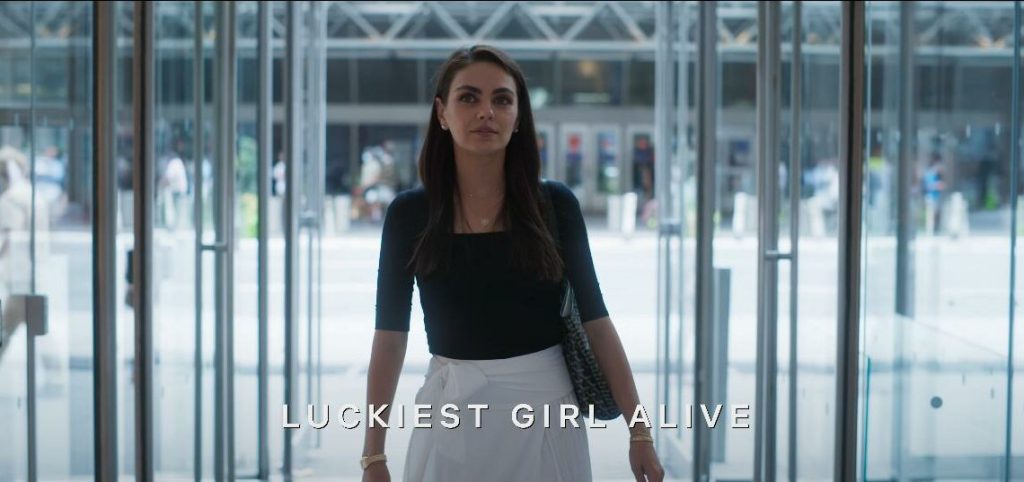The latest thriller from Netflix, “Luckiest Girl Alive,” debuted on Friday, October 7. It tells a real narrative that reflects concerns that are current in today’s society.
The movie is based on Jessica Knoll’s #1 New York Times bestseller novel of the same name. Together with the movie’s director, Mike Barker, Knoll also co-wrote the screenplay for the movie.
In the movie “Luckiest Girl Alive,” the main character’s present existence is impacted by a past tragedy.
“Luckiest Girl Alive” deviates from the typical trend of relatively amateurish and inexpensive production that most movies published on Netflix follow. The mystery portrays highly important subjects to its viewers courteously and powerfully. It is appropriately categorized as R because some intense situations heighten the impact of telling the narrative.
The narrative follows Ani FaNelli in both the present and the past and stars Mila Kunis as Ani and Chiara Aurelia as Ani when she was younger.
Ani, a figure with several identities who is a writer waiting for her big break, the fiancée of a wealthy guy from old money, and a person trying to come to terms with her history, is the focus of the novel, which is set in New York City.
Ani’s terrible background is revealed to the viewer throughout the movie, initially through the eyes of the general public and then, as the story digs further into Ani’s secrets, on a more intimate level.
The value of truth and honesty is emphasized in the movie, and Ani often wrestles with the decision of whether or not particular information should be made public. When she is given the chance to tell her side of the story about the incident that took place over two decades ago, this becomes crucial.
The producer of a documentary who wants to interview the victims and people impacted by the tragedy approaches her. Ani takes advantage of this chance to reflect on the past, but eventually, she must choose what is best for her.
The movie’s ability to completely develop both timeframes was one of my favorites. The book’s publication year of 2015 serves as the “current,” while 1999 depicts Ani’s time in high school at her elite private school.
The two performers who portray Ani give the impression that they are acting as a single unit, allowing the character to develop in a way that feels natural and real.
This helps the viewer better comprehend the character’s overall story and how the tragedy has affected the way she is now.
The film’s skillful editing strengthens these timeframes. My curiosity about what had occurred and what ahead began with the first scene, and this sense was greatly influenced by the editing.
The transitions between the past and current tales were made relatively flawlessly, and they frequently had something in common. As an illustration, as a scene from the past transitions to a scene from the present, a cable knit sweater is brought up in the discussion, subtly tying the two together.
For me as a spectator, the pace in a mystery or thriller movie is as vital to the editing. The movie’s pace was managed by Barker in a way that kept viewers interested the whole time. He maintains a continuous flow between the two timeframes and makes the disclosures of the 1999 events relevant to the 2015 scenes.
The narrations supplied by Kunis shed insight into the inner thoughts of the character Ani, giving her a complexity that is sometimes missing in movies, even though some of the speech was occasionally a touch cringe-worthy. This addendum reflects Knoll’s participation in the movie.
Despite not having read Knoll’s book, I value authors’ contributions to the filmmaking process, particularly screenwriting, as it gives the story a more authentic voice from the person who first had the idea for it (for instance, Jenny Han’s work on the Amazon Prime series of her books, “The Summer I Turned Pretty”).
To make a movie that is both dramatic and enjoyable, a film with a topic this serious and emotional needs to be treated carefully. Due to its delicate storyline and strong performances by Kunis and Aurelia, “Luckiest Girl Alive” engagingly delivers a compelling narrative.
